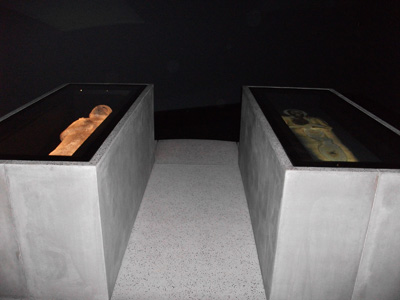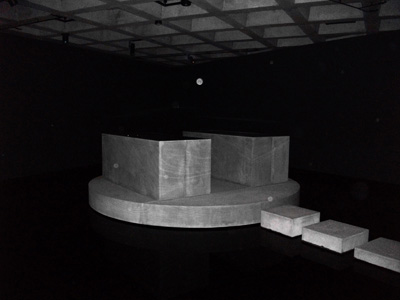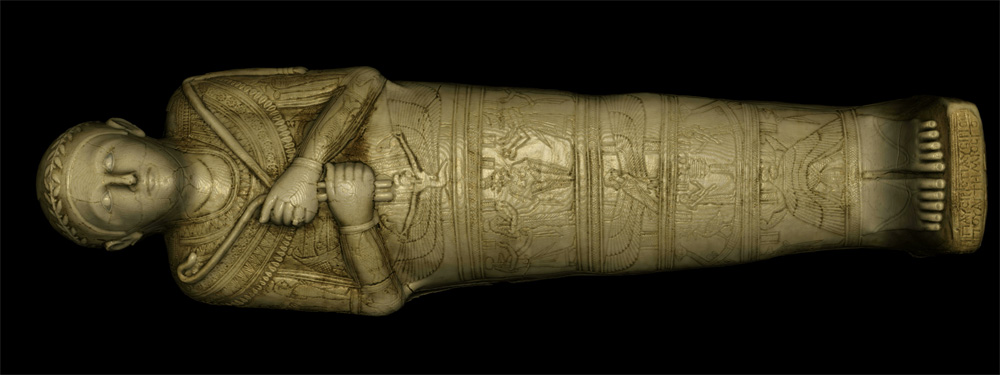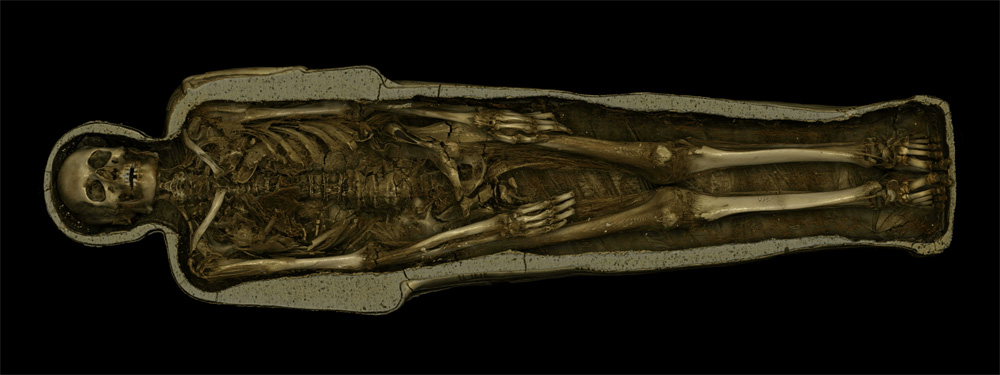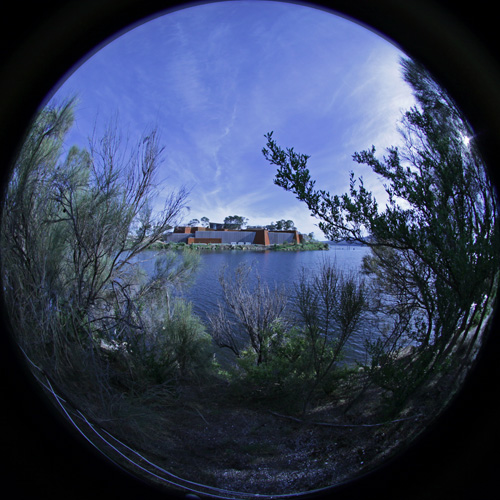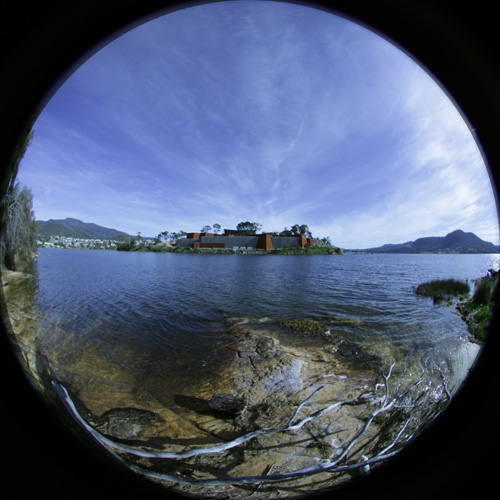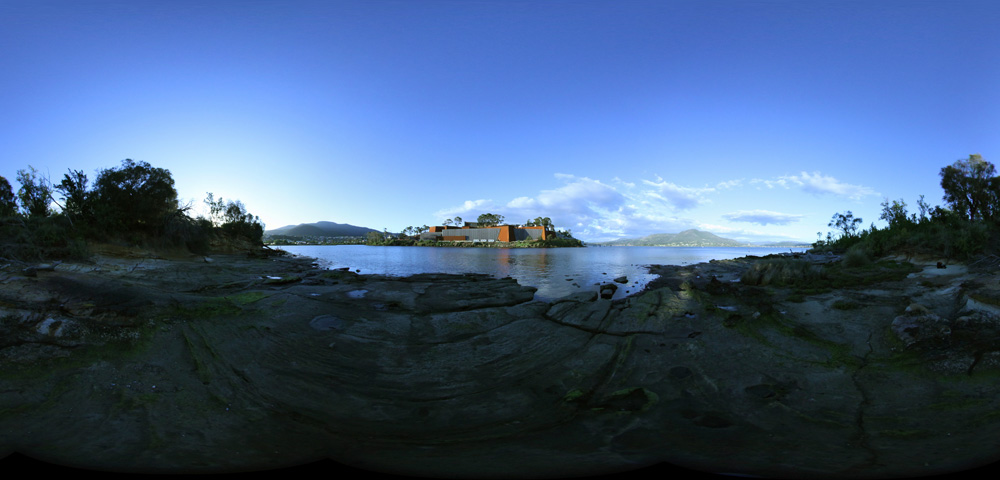Pausiris Mummy ExhibitionMONA (Museum of New and Old Art)Digital installation by Paul Bourke and Peter Morse. February 2011 High resolution render update, August 2011.
The following are some technical notes relating to the digital display of the Pausiris mummy in the MONA Pausiris gallery. The gallery, shown below, consists of two cabinets. One contains the real Pausiris mummy (left) and the other the digital interpretation (right). The digital representation reveals the interior of the mummy casket, slowly peeling away the casket and wrappings. One approaches the two display cabinets by walking on stepping stones, the room is flooded by black dyed water. Gallery
Image pipeline
In order to achieve sufficient resolution (the viewer is less than 1m away from the screen surface) two HD projectors were used. It is almost impossible to physically align two projectors so that the images align pixel perfect. The solution is to align them as close as possible and then do the image alignment in software. This involves splitting each frame in half and applying each half as a texture to a mesh that incorporates the image warping required for perfect alignment. A software tool was created that allows the operator to quickly create the two mesh files required. The pipeline then is shown below: split the frames, apply a blending so the overlapping images form a seamless image, and finally warp the images so they overlap perfectly on a non perfectly aligned projector arrangement. The edgeblending is per colour and takes the gamma of the projectors into account (need to add light intensity not pixel values). 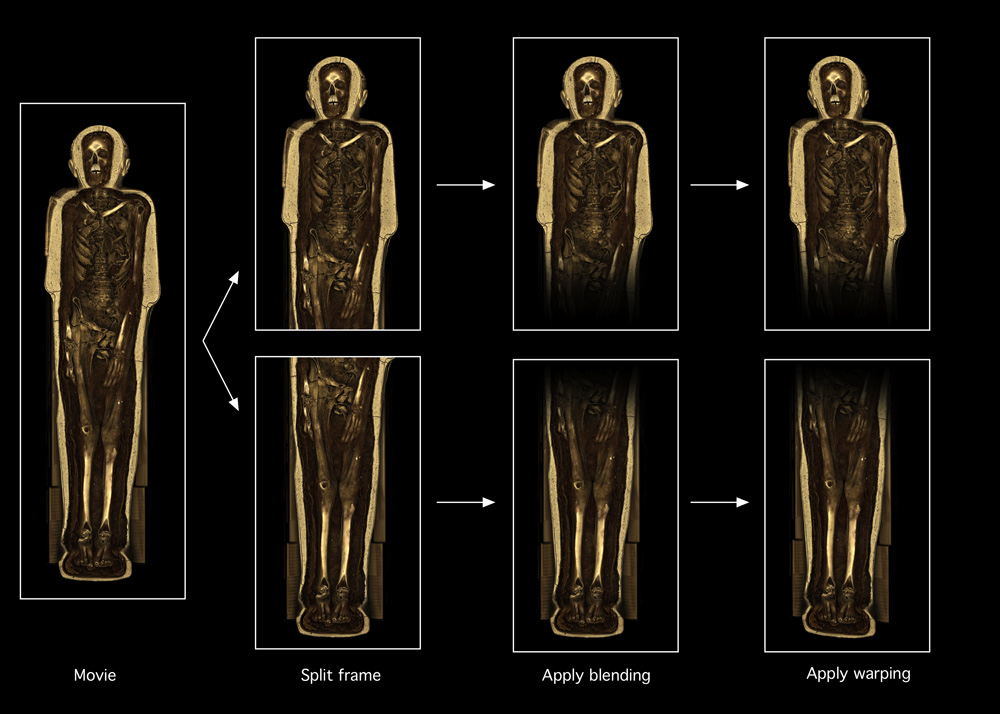
The above pipeline is implemented in Quartz Composer. The input is a single QuickTime
movie. The movie splitting, edgeblending, and geometric alignment is all performed
in realtime. This is generally a necessity since in time the projection hardware
will get out of alignment due to mechanical changes. If the edge-bending and digital
alignment were precomputed (generally a time consuming exercise)
it would need to be performed after each re-alignment.
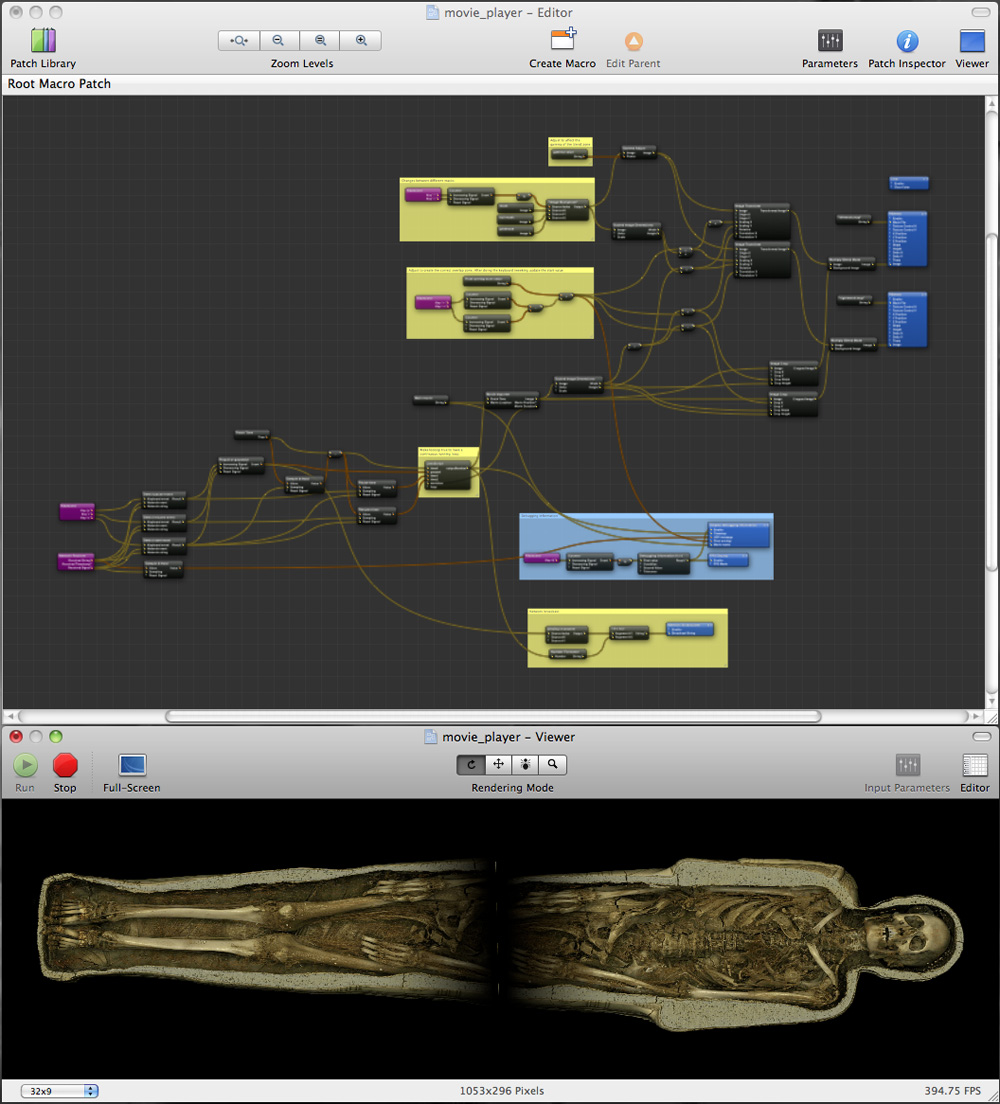
Projection
The dual projector arrangement is as shown below. Each projector is 1920x1200 and the overlap is arranged to give approximately a 3200 pixel long image. This overall geometry of the projection is dictated by the need to match the digital with the real object. 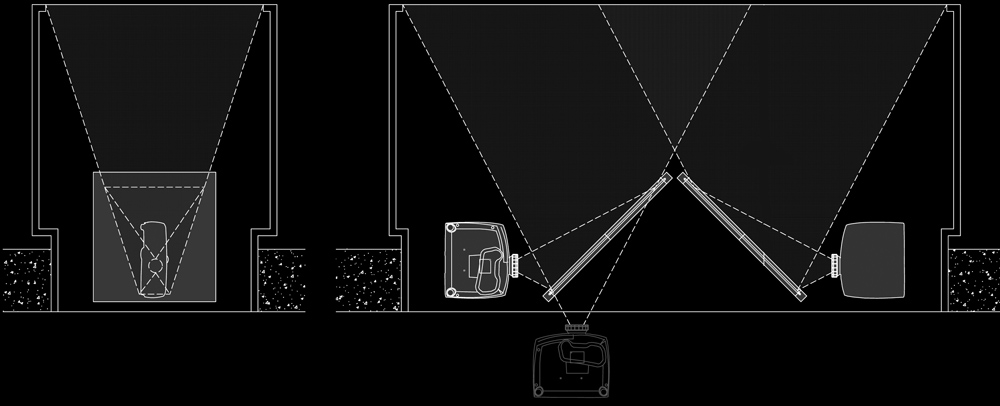
The display case for the digital representation of the mummy needed to match the display case with the real Pausiris mummy, this necessitated the use of a folded light path for each projected image. Note that the projectors are also rated for operation on their side, something fairly uncommon in small form factor projectors. 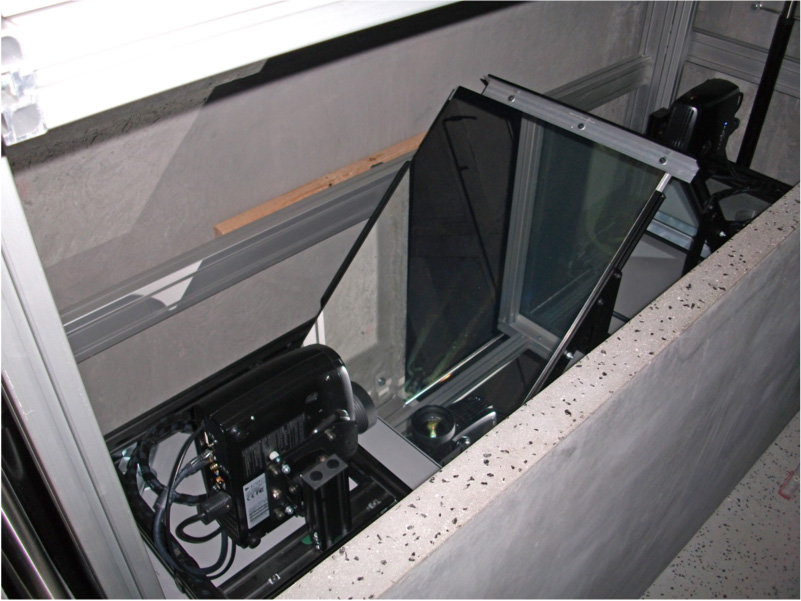
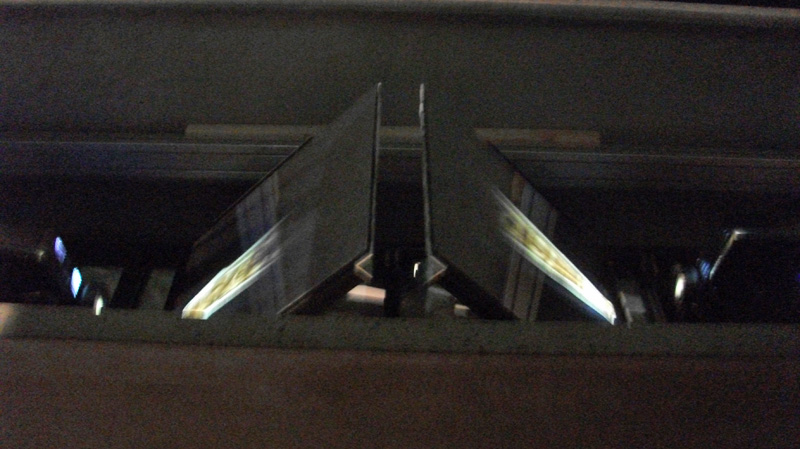
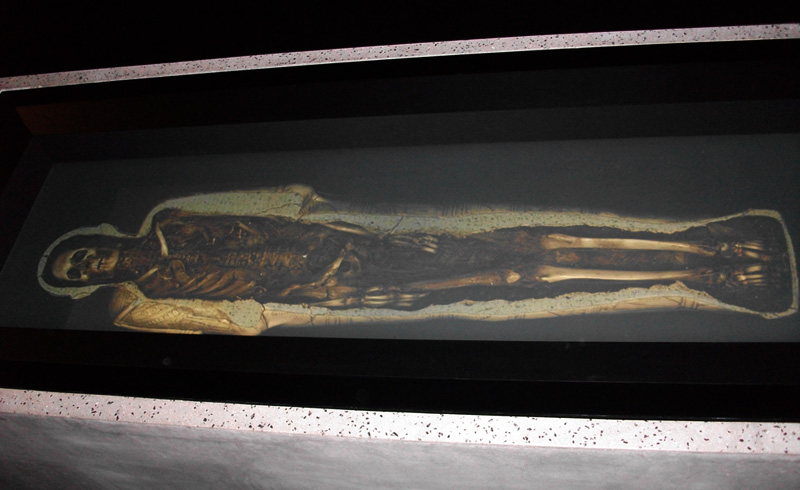
Movie samples
The following are three sample frames from the slow "unwrapping" of the mummy. The frames of the move were prepared at 4000x1500 pixels, rendered from a volume rendering package called Drishti that is developed at the ANU (Australian National University). The data is sourced from a CAT scan performed at the Hobart hospital, the final resolution of the volume after trimming is 2400 x 512 x 512 voxels. Voxel resolution is 1mm x 1mm in slice and 0.7mm between slices. The most challenging aspect of the volume processing arose because the mummy was scanned in three sections. Furthermore the orientation of the mummy in the scanner varied between scans.
The building
And finally, photos of MONA on the opening day (21st February 2011) from "frying pan" island.
|
